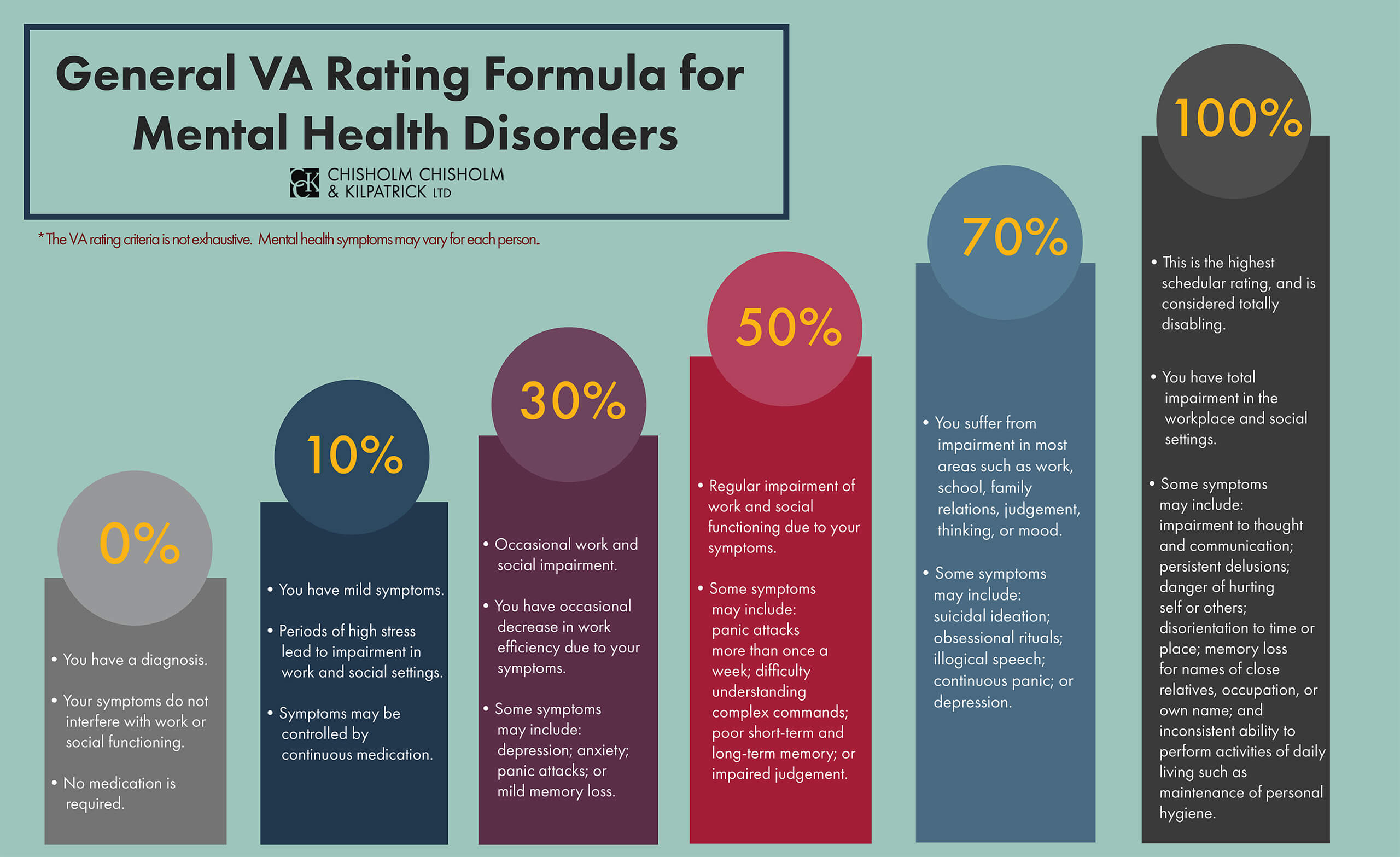VA Disability for Adjustment Disorder with Anxiety

CCK Law: Our Vital Role in Veterans Law
Adjustment Disorder vs. Anxiety
What is Adjustment Disorder?
Adjustment disorder is characterized as a short-term condition that occurs when a person has great difficulty coping with, or adjusting to, a particular source of stress, such as a major life change, loss, or event. Since people with adjustment disorder often have some of the symptoms of depression, such as tearfulness, feelings of hopelessness, and loss of interest in activities, the condition is sometimes informally referred to as “situational depression.” However, unlike major depressive disorder, adjustment disorder does not involve as many of the physical and emotional symptoms of clinical depression (e.g., changes in sleep, appetite, and energy) or high levels of severity (e.g., suicidal ideation). The types of stressors that can trigger this condition include the following:
- Ending of a relationship or marriage
- Losing or changing job
- Death of a loved one
- Developing a serious illness
- Being the victim of a crime
- Having an accident
- Undergoing a major life change
- Living through trauma
Adjustment disorder is marked by emotional and/or behavioral symptoms (e.g., sadness, frequent crying, anxiety, withdrawal, or isolation) that generally begin within three months of the stressful event and rarely last for longer than six months after the event has ended. In order to be categorized as adjustment disorder, the reaction to a particular stressor must be greater than what is typically expected for the situation or event. Furthermore, the symptoms must impact a person’s ability to function on a daily basis.
It is important to note that adjustment disorder is not the same as post-traumatic stress disorder (PTSD). PTSD occurs as a reaction to a life-threatening event that takes place at least one month after the traumatic event, and its symptoms tend to last longer in duration.
What is Anxiety?
Anxiety is often defined as the mind and body’s reaction to stressful, dangerous, or unfamiliar situations. It is typically characterized by intense, excessive, and persistent worry or fear about everyday situations. The most common symptoms of anxiety disorders include the following:
- Feeling restless, jumpy, or on edge
- Excessive worrying
- Difficulty concentrating
- Rapid heartbeat
- Trembling or twitching
- Muscle tension
- Shortness of breath or difficulty breathing
- Feeling dizzy, nauseous, or lightheaded
- Difficulty sleeping
There are several types of anxiety disorders, such as generalized anxiety disorder, panic disorder, and various phobia-related disorders.

Relationship Between Adjustment Disorder and Anxiety
Adjustment disorder is one of the most prevalent mental health conditions in both military and civilian populations. Moreover, it is the most commonly diagnosed type of mental health condition among active duty service members. In 2017, 7.1 percent of active duty service members were diagnosed with an adjustment disorder. This percentage is very high compared to 2.1 percent of service members diagnosed with PTSD, 4.2 percent diagnosed with a depressive disorder, and 4.8 percent diagnosed with an anxiety disorder. However, anxiety becomes a more prominent issue following discharge from service; about 10 percent of veterans report elevated levels of anxiety whereas 7 percent of veterans report a diagnosis of adjustment disorder. In some cases, veterans may have adjustment disorder with anxiety.
What is Adjustment Disorder with Anxiety?
According to the Diagnostic and Statistical Manual of Mental Disorders, fifth edition (DSM-5), adjustment disorder can vary depending on how it presents and manifests. Adjustment disorder can be present with depressed mood, disturbance of emotions and conduct, anxiety, or a combination of these conditions. When adjustment disorder presents with anxiety, the following symptoms are often present:
- Fear
- Restlessness
- Panic attacks
- Irritability
- Difficulty sleeping
- Suicidal ideation
- Mild memory loss
- Jitteriness
- Fear of separation from major attachment figures
Establishing Service Connection for Adjustment Disorder with Anxiety
Direct Service Connection
In order to receive VA disability benefits for adjustment disorder, veterans must first establish service connection. Doing so on a direct basis involves satisfying the following three elements: (1) a current diagnosis of adjustment disorder with anxiety; (2) evidence of an in-service event, injury, or illness; and (3) a medical nexus linking the in-service occurrence to the current, diagnosed adjustment disorder with anxiety. The third element will likely be satisfied by attending a Compensation & Pension (C&P) examination. Here, veterans are looking for the VA examiner to find that their condition is “at least as likely as not” due to their time in service.
Secondary Service Connection
Veterans may also establish service connection for their adjustment disorder with anxiety on a secondary basis. To do so, they must show that an already service-connected condition either caused or aggravated their adjustment disorder with anxiety. For example, a veteran sustained a traumatic brain injury (TBI) during service and was diagnosed with the condition several years later. If the veteran can show that their TBI caused or aggravated their adjustment disorder with anxiety, then secondary service connection may be warranted. In this case, it is very important to clearly establish the nexus (i.e., link) between the primary service-connected condition and the secondary condition.
Service Connection Based on Aggravation
Importantly, VA will also compensate veterans for conditions that existed at the time of entry into service and were made worse or “aggravated” by service. According to 38 CFR § 3.306, “a preexisting injury or disease will be considered to have been aggravated by active military, naval, or air service, where there is an increase in disability during such service, unless there is a specific finding that the increase in disability is due to the natural progress of the disease.” Therefore, if a veteran was diagnosed with adjustment disorder with anxiety prior to service, they may still qualify for VA disability benefits if they can prove that the condition worsened as a result of active duty service.
Compensation & Pension (C&P) Examinations for Adjustment Disorder with Anxiety
As mentioned above, C&P examinations are generally used to determine if there is a nexus between the veteran’s current, diagnosed condition and their time in service. Veterans will typically meet with a VA doctor to discuss their medical history, time in service, and current condition. The VA examiner will also ask about the veteran’s current symptomatology to determine the severity of the condition (in this case, adjustment disorder with anxiety). Importantly, veterans must always attend their C&P examinations, or notify VA immediately if they are unable to do so. Failure to attend a C&P examination will likely result in VA automatically denying benefits.
How Does VA Rate Adjustment Disorder with Anxiety?
If service connection is established, VA will assign a disability rating based on severity. VA rates adjustment disorder with anxiety using the General Rating Formula for Mental Disorders under 38 CFR § 4.130. Veterans can be assigned a 0, 10, 30, 50, 70, or 100 percent disability rating. Such ratings are based on the level of social and occupational impairment caused by the condition.
It is important to note that veterans are not required to meet all, or even any, of the criteria in a rating level to qualify for that rating. Since mental health conditions can manifest differently per individual, VA’s rating formula for mental health conditions is not binding. Symptoms listed in each level of the rating formula are simply examples meant to demonstrate the types and levels of impairment commonly found at that assigned percentage.
Evidence for Adjustment Disorder with Anxiety Claims
VA C&P examinations represent one form of evidence for adjustment disorder with anxiety claims; however, there are several other types of evidence veterans can submit as well. For example, lay evidence, including statements from veterans and their family and friends, can be very beneficial. Oftentimes veterans do not seek treatment for their adjustment disorder with anxiety right away due to the stigma that exists around mental health conditions. Lay statements can help fill in the gaps by describing both the onset and progression of the condition. Veterans can also submit private treatment records from non-VA doctors or psychologists.
Will Veterans Receive Separate Ratings for Adjustment Disorder and Anxiety?
Since all mental health conditions are evaluated using the same criteria, veterans with multiple mental health conditions, such as adjustment disorder with anxiety, will likely be assigned one combined rating. Similarly, veterans do not need to submit a separate claim for each mental health condition (i.e., adjustment disorder and anxiety), although they are free to do so if they wish.
About the Author
Share this Post

